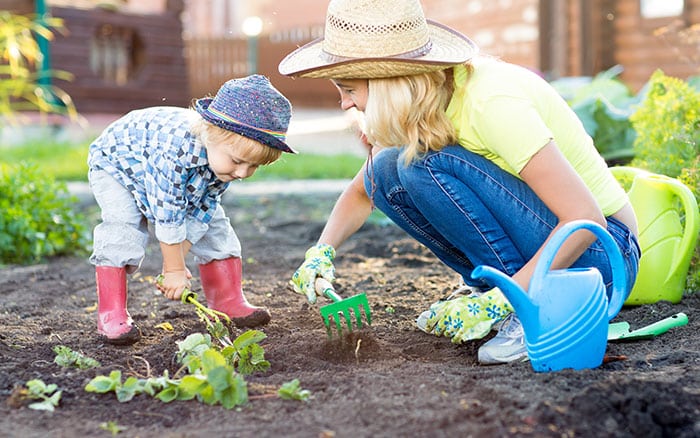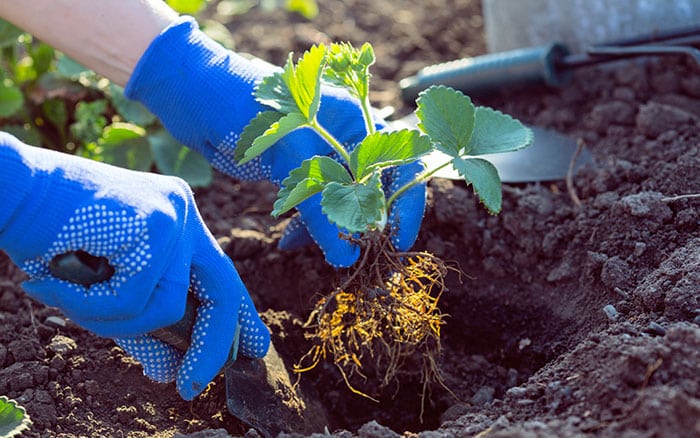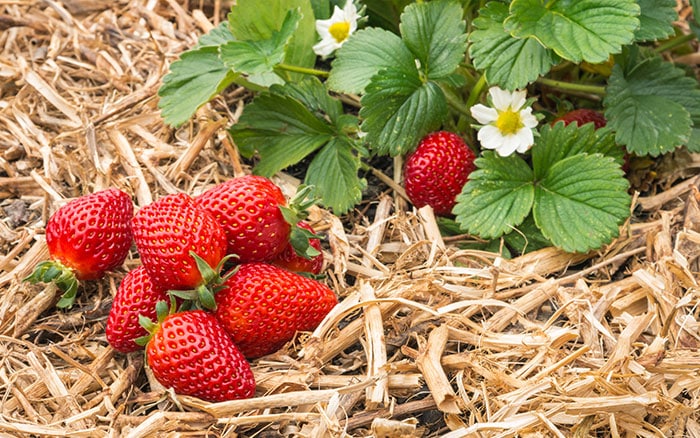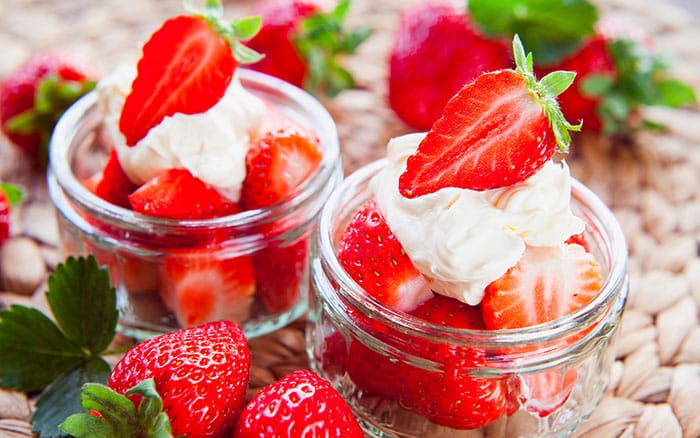How to sow and grow strawberries UK
Make milkshakes, mocktails and cocktails, slather them in fresh cream, top cakes and deserts, or give them a wash and eat them straight from the vine! That's right, it's strawberry season!

Strawberries are one of the nation’s most beloved fruits. The wild varieties have been growing in Britain since the Ice Age, and the first garden strawberry was reportedly grown in France during the late 18th century.
Sweet, delicious, and juicy, they’re well worth growing in school or community gardens. A crowd-pleaser, especially at the upcoming tennis tournament, Wimbledon! There, strawberries take centre court, making appearances in Pimms and as a snack, served with delicious fresh cream.
Are strawberries good for you?
Strawberries are actually a member of the rose family and one of the most popular berries in the world! It’s hard to imagine that something so sweet and juicy is good for you…but it is! In fact, seven fresh strawberries count as one of five a day. Here's why:
- Heart-shaped themselves, strawberries are thought to support heart health. They are rich in colourful pigments, and anthocyanidins, which have a protective effect, including prevention of inflammatory conditions and heart disease.
- They could help those with type 2 diabetes! Strawberries contain protective plant compounds called polyphenols. Two of which have shown promise in helping to manage the effects of type 2 diabetes. It looks like they could help to regulate blood sugar and manage blood pressure!
- They could help with weight management. Strawberries help to moderate blood sugar release. They’re also low in calories, but super sweet, so a perfect healthy alternative for those with sweet cravings!
How do you grow strawberries?
1. Get preppin'

Make sure the planting area is free of weeds, and improve the soil by digging in two buckets of compost or well-rotted manure. You can also rake in some high potassium fertiliser, like fish, blood, and bone. Use half a handful per square metre.
2. Plant up!

Traditionally, strawberries are grown in rows in dedicated beds or patches. But they’re also great for container growing, like hanging baskets, grow bags, and even old Wellington boots! Get creative.
Purchase a young strawberry pot from a reputable garden centre, in late spring or summer. Make sure to plant them about 30-45cm apparent, in rows around 75 cm apart, so that their roots are just buried and the soil is firm around them. Make sure to water them well during the first few weeks to make sure they get well established.
If you’re growing in a container, make sure it’s deep and at least 15cm wide. Plant one strawberry per pot. Feed with a high liquid potash feed (like tomato food) every week or two, from early spring onwards.
3. Care a little, care a lot.

Make sure you water your plants regularly, particularly when the sun comes out. Take care, however, to avoid watering the centre of the plant and ripening fruits, to prevent pesky grey mould.
Scatter a general-purpose fertiliser around your plants in early spring. From then on, encourage fruit growth by feeding the plants with a high potash feed. Tuck some straw around the plants, just before the fruits start to develop. This will help to deter weeds, slugs, and snails, as well as keep the berries clean.
Use netting to stop the birds from snacking on your berries. It’s best to use fixed net caging so that pollinators can still access the plants, whilst other mammals and pests are less likely to get trapped.
4. The best bit...

It’s harvest time! Once the fruits turn red, they’re ready to be eaten. Simply pinch the stalks with your finger and thumb. This will avoid bruising the fruit.
If you’d like to encourage strong growth for next year’s crop, cut the foliage about 5cm from the ground level once fruiting finishes. Then give the plants a good feed with your general-purpose fertiliser. Make sure to remove the old straw to avoid pests and disease.
It’s worth noting that after three to four years, your fruit size and quality will begin to decline. It’s best, then, to replace your plants with new stock. You can actually propagate your own plants, using the runners they produce!
How and where do you store strawberries?
Strawberries are at their most delicious as soon as they’re plucked from the plant, and still warm from the sun. They are perishable so won’t keep too long, but you can keep fresh strawberries in the fridge for a few days. Just make sure you give them a quick rinse before tucking in!
You can also freeze strawberries, which is great for adding to smoothies, cold drinks, and icecreams. Simply wash them before freezing, let them air dry, and then pop them into the freezer on some baking paper. After a few hours, you can take them out and transfer them to freezer bags for longer-term storage. They should easily last six months in the freezer!

And there you have it! Strawberries for your school or community garden to share, feast upon, and turn into delicious desserts. And remember, they'll make a great touch if you're planning to host any Wimbledon-themed events!

